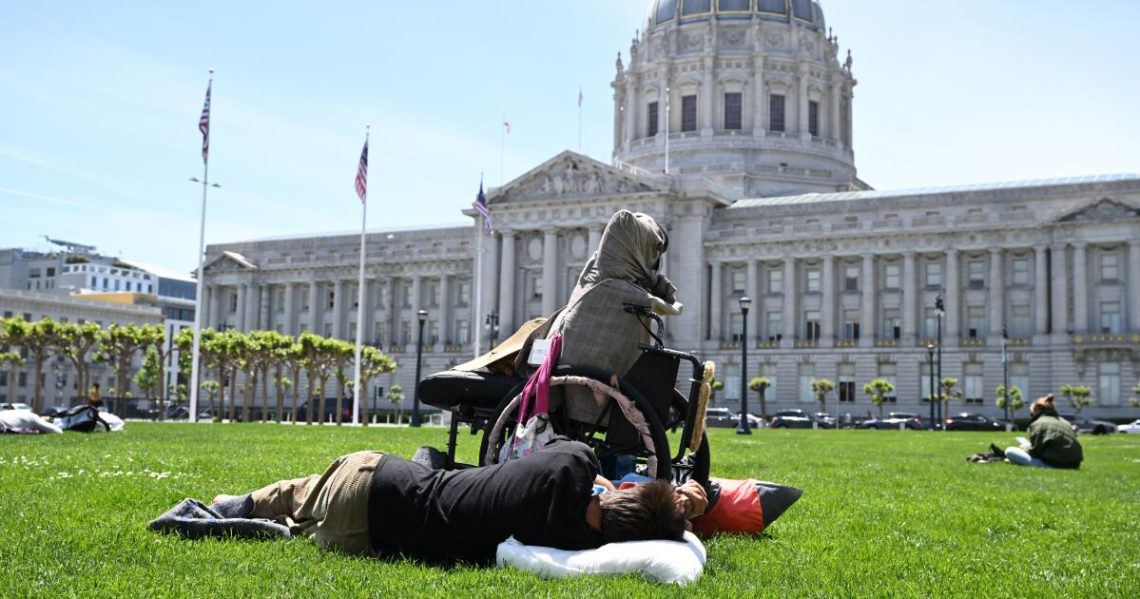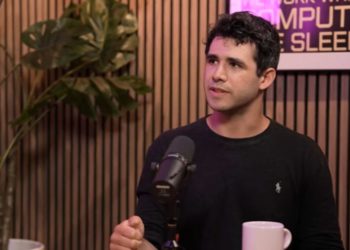The first couple of years of the Reagan administration were rough on most Americans. His 1981 cuts to safety net programs led to an additional 6 million people falling into poverty between 1980 and 1983. Coupled with an unemployment of nearly 11% during his first term, Reagan ended up raising taxes more than 10 times during his presidency to try to clean up the mess his 1981 cuts made.
However, elements of that economic devastation continue to haunt us today. One of the most obvious examples is the explosion of homeless encampments in the nation’s downtowns, which began during Reagan’s presidency and led to the first federal legislative response to homelessness, in 1987.
Here we are nearly four decades later: The country has its highest number of homeless people since tracking began, and House Republicans just voted to cut safety programs. It’s as if those Reagan years taught them nothing about cause and effect. Yes, we have a $36-trillion national debt, and Moody’s just downgraded our credit rating. We have to draw in the purse strings for the sake of our fiscal stability. But it matters where you make the cuts. Creating a scenario that could increase poverty and homelessness is wildly counterproductive.
Even setting aside for the moment the human costs, the economic case for reducing homelessness is painfully clear.
The commercial real estate value of our downtowns is eroded by vacancies, with Downtown L.A. suffering a rate of more than 30%, according to a recent Cushman and Wakefield analysis. And that wealth is going to continue to flee downtown because people avoid downtown. Why? Safety concerns. Something about seeing a bunch of boarded-up buildings and tents on the streets doesn’t feel comforting.
A federal budget crafted to crush the most vulnerable people will push countless Americans out of their precarious housing and onto the streets. The Republicans’ vision will create more encampments — certainly no way to address the public’s safety concerns or revitalize downtowns.
It’s impossible to make America great without first taking care of her people — all of her people. All the fancy strip malls in the suburban world won’t change that.
In Downtown L.A. in 1983, Bullock’s at 7th Street and Broadway shuttered its doors. That same year, Gimbels in New York said goodbye. And in my hometown of Detroit, the vast Hudson’s — second in size only to Macy’s in New York — also closed.
That wasn’t just a reflection of changing shopping habits. That was also a microcosm of the economic erosion that was plaguing the heart of our cultural hubs after those devastating budget cuts in 1981.
A municipality’s best architecture is often downtown. The best historic buildings are near courthouses and Main Streets. When America cared about its downtowns, entire cities and states thrived. We can’t afford to give up on our urban centers. Local officials get that; cities perennially float plans and tweak policies in the hope of revitalizing these areas. But before elected officials focus on removing red tape from acquiring liquor licenses or offering tax breaks to would-be developers, they must help the people sleeping on the streets in front of the buildings that cities want to reopen. Until that happens, the economic potential of our downtowns will stay in limbo.
Californians take this risk seriously. Assemblymember Matt Haney (D-San Francisco) is spearheading a multilayered initiative to revitalize struggling downtowns across California since the pandemic. For more than a year he’s met with mayors and other leaders from nine cities to identify the barriers to a thriving downtown.
This week Haney, who chairs the Assembly’s Downtown Recovery Committee, announced a package with 13 initiatives designed to bring life back to civic centers. Three of them specifically target homelessness. As far as I’m concerned, those are the only three that matter. If the public sector can get people off the streets and into shelters, the private sector will do the rest.
“I think that the cities now have the tools and the legal clarity to effectively address encampments,” Haney told me this week. “They can clear persistent encampments, but they also need to have places for people to go.”
That last point cannot be ignored.
“Cities now are more focused on those short-term shelters and transitional housing and ensuring there are adequate placements,” he said — a crucial component given that last summer the Supreme Court endorsed the power of cities in California and the West to break up encampments, and this month Gov. Gavin Newsom has made that tactic a talking point.
“What we don’t want to see is just clearing an encampment so that people then get up and move two blocks away,” Haney added. “Nor does it make much sense to spend money to put somebody in jail solely because they’re homeless. That’s not going to be a solution.”
His take is that the top priority for the state government and for mayors should be funding for “homelessness response, which really is focused on being able to remove encampments and get people inside.”
Obviously that’s easier said than done. But if that isn’t done, nothing else will work. Unhoused people will have no path out of homelessness, and our downtowns will continue their death spiral.
The post Granderson: Pushing more Americans into homelessness is no way to revitalize downtowns appeared first on Los Angeles Times.




